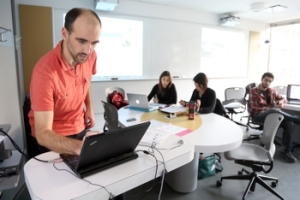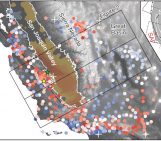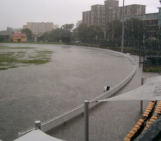
 Contributed by Grant Ferguson, University of Saskatchewan
Contributed by Grant Ferguson, University of Saskatchewan
grant.ferguson@usask.ca
In an earlier blog post, Tom discussed some of the advantages and disadvantages of co-teaching a blended graduate course to students at McGill University, the University of Wisconsin – Madison and the University of Saskatchewan. This course wrapped up last month… we definitely learned a few things during its delivery, some of which were surprises that we hope you can learn from.
Surprise #1: The course outline and structure came together rather quickly and there was minimal debate on the content that we would cover. We did not attempt to be comprehensive in our coverage and chose to teach to our research interests. At the same time, we did not feel that there were obvious gaping holes in the curriculum. We included a review of what we expected the students to understand coming into the course. Although we were teaching students from a variety of backgrounds including civil engineering, environmental science, geosciences and forestry our expectation was that everyone should have been exposed to similar content in their undergraduate hydrogeology course. A recent review on the content of undergraduate hydrogeology courses by Gleeson et al. (2012) indicated that the core content of these courses does not vary that much from university to university.
However, surprise #2: students had very different interests and strengths. Some universities had students that excelled at MatLab while others were far more proficient with GIS. The interests of students also tended to mirror those of their home institutions. Students from McGill tended to be interested in water resource sustainability and large-scale problems, students from Saskatchewan were focused on problems associated with resource-extraction and students from Wisconsin tended to be more interested on hydrological processes and ecosystems. Exposing these biases, strengths and weaknesses was valuable for both instructors and students.
Surprise #3: this may not be a more ‘efficient’ way to teach since we spent far more time preparing lectures for this course than we normally do for other courses. Teaching to students and other universities with other instructors present brought teaching to a different level. This effectively negated the initial thought that this would be a more efficient way of teaching because we were only on the hook for a third of the lectures. Part of this preparation was related to knowing that we would be forced to rely on slides more heavily than in a conventional classroom. However, the greater motivation was knowing that this presentation was going outside the walls of the home institution and that colleagues from other universities would be following along.
Surprise #4: Communication during the course went more smoothly than expected. Aside from a few momentary hiccups, there were few problems hearing the lecturer. Talking between institutions during the lecture went well, although questions were generally repeated by the lecturer or someone nearer to the microphone at other schools. The biggest obstacle might have been for the lecturers. Despite some efforts to situate cameras and explore different views within Microsoft Lync, it was difficult for the lecture to see the remote classrooms. Without being able to see facial expressions or body lan guage, it was difficult to assess how the material was being received at the other locations. This problem can likely be resolved to some extent with additional monitors and better cameras.
guage, it was difficult to assess how the material was being received at the other locations. This problem can likely be resolved to some extent with additional monitors and better cameras.
The feedback from the students was largely positive. Most of them seemed happy to participate in this experiment and get some exposure to other institutions. Tom, Steve and I all agreed that we would do this again given the chance. However, it appears that the stars might not align for us in 2015 due to some other commitments. We will see if we still feel this way in 2016.




Mark Ranjram
From a student perspective, the only real negatives were the occasional difficulties with the audio-visual equipment and the challenge of figuring out the modules that weren’t in your wheelhouse (although the latter is really the essence of learning, so perhaps its a “negative” in quotes. I will say that it definitely took me some extra time to figure out the other modules though). The positives on the other hand were huge: it really came across that we had three professors who really knew their material and cared about what they were talking about. The exposure to the two modules outside of our home institutions’ speciality was basically invaluable; just think how impossibly difficult it would have been to learn from 2 other specialists hundreds of kilometers away 10 years ago! I really hope y’all get a chance to do this again in 2016!